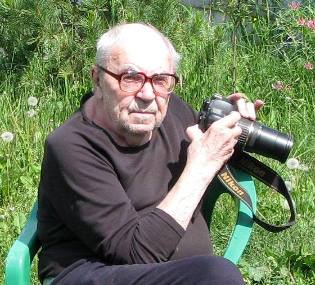This large bulky volume of
495
pages,
printed on coated paper, is almost too
heavy to hold. The book consists of five parts that
include 21 chapters. The first part is dedicated to the
eider biology. It describes, in detail, the entire
lifecycle of the species, and its unique features. The
section contains the usual zoological information
delivered in plain easily comprehensible language.
Anyone who opens the book will be able to construct the
“image of the species” and to see the eider’s world
reconstructed by the author. That alone would seem
sufficient for a story about this northern duck. But now
something very unusual is about to happen.
From the world of the eider we are
transferred to our,
human,
universe,
where the eider plays, it turns out, a
role much greater than that of just a supplier of the
famous eider down. We learn that these birds have their
patron saint.
The pictures depicting St.
Cuthbert have the eider beside him. These
birds probably made the life of the Farne Island hermit
much more comfortable, and his relationship with the
eider is described in legends. However,
as we read on,
the legend of St.
Cuthbert’s patronage over the eiders
falls apart before our very eyes. The author pulls the
myth of a special relationship between the saint and the
eiders apart, skilfully separating the wheat from the
chaff. So this part of the book also reads like a good
crime story.
Having figured out the situation with the
saints related to the eiders, we move on to earthy
matters that include very different types of human
activity, such as hunting, eider farms, scientific
research, nature protection, fine arts and literature.
Each aspect of the relationship between humans and the
eider is considered in minute detail, with a detour into
the history of the question. We have a bird’s eye view
of Man’s relationship with one of the representatives of
living nature, and this relationship is shown full of
complexity and contradiction. The author has considered
the entire imaginable range of the relationship of
humans with a specific biological species, from setting
up nature reserves to its domestication, from
archaeological findings and eider museums to the poem by
Henrik Ibsen and the “Flying to the North” story by V.
Fedorov.
In a thorough and a fundamental manner A.
Goryashko considers the archaeological
data related to the relationship of humans with the
eider,
mentioning of the eider in written
sources,
or scientific descriptions of the
species. The author relies on the most interesting of
documents and describes how eider protection laws had
originated.
We learn, in detail, all about the eider
down and its processing, as well as of using eider meat
and eggs for food. The book tells us about the history
of eider down harvesting in Russia, and with the
establishment, as well as the subsequent dying off of
eider farms in our country. Here the difference with
eider farms, that stand out with their efficiency, in
other in other countries is emphasized.
There is a chapter dedicated to the
important place the eider occupies in the traditional
nature usage by the indigenous peoples of the North,
where is serves as a source of food, a provider of
material for making clothes, ornaments, medicines and
tools.
We read about the eider as a pet,
get acquainted with people who,
one may say,
spent their lifetimes protecting and
studying the eider.
The last chapter is about many legends
and misunderstandings around the eider.
(The
author,
however,
does it throughout her entire book.)
This chapter not only refutes false views
but also provides true information about rare or little
known peculiarities of this species’
behaviour,
e.g.
about the fact that eider chicks can
travel by sitting on their mother’s back.
The author analyzes how all sorts of
untrue stories may have come about. The reasons could
have included simple illiteracy, errors that arise
during the retelling of the stories, translation
difficulties and, finally, human tendency to mythologize
everything that does not match the ordinary. That’s how
final accords in the overall picture of this in its own
way unique species are arranged.
One cannot, in a brief review, list all
the issues touched by the author. This is a fundamental
work that impresses one with the amount of information,
the thoroughness with which the material has been
processed, and the width and variety of the issues
discussed. At the same time the book uses beautiful
literary language that makes it accessible to anyone
interested in the connection between humans and nature.
The book is richly illustrated, with lots
of unique archive photos and impressive colour pictures.
Each chapter concludes with a list of literature and
internet sources used. There is nothing of the sort in
the present-day popular science literature. The
publication of this book is certainly an important event
both for the zoologists and nature protection experts,
and for a wide circle of nature connoisseurs. It is an
invaluable support in the educational work.
Lastly,
it does make a fascinating and useful
reading.
Professor E.N.
Panov
